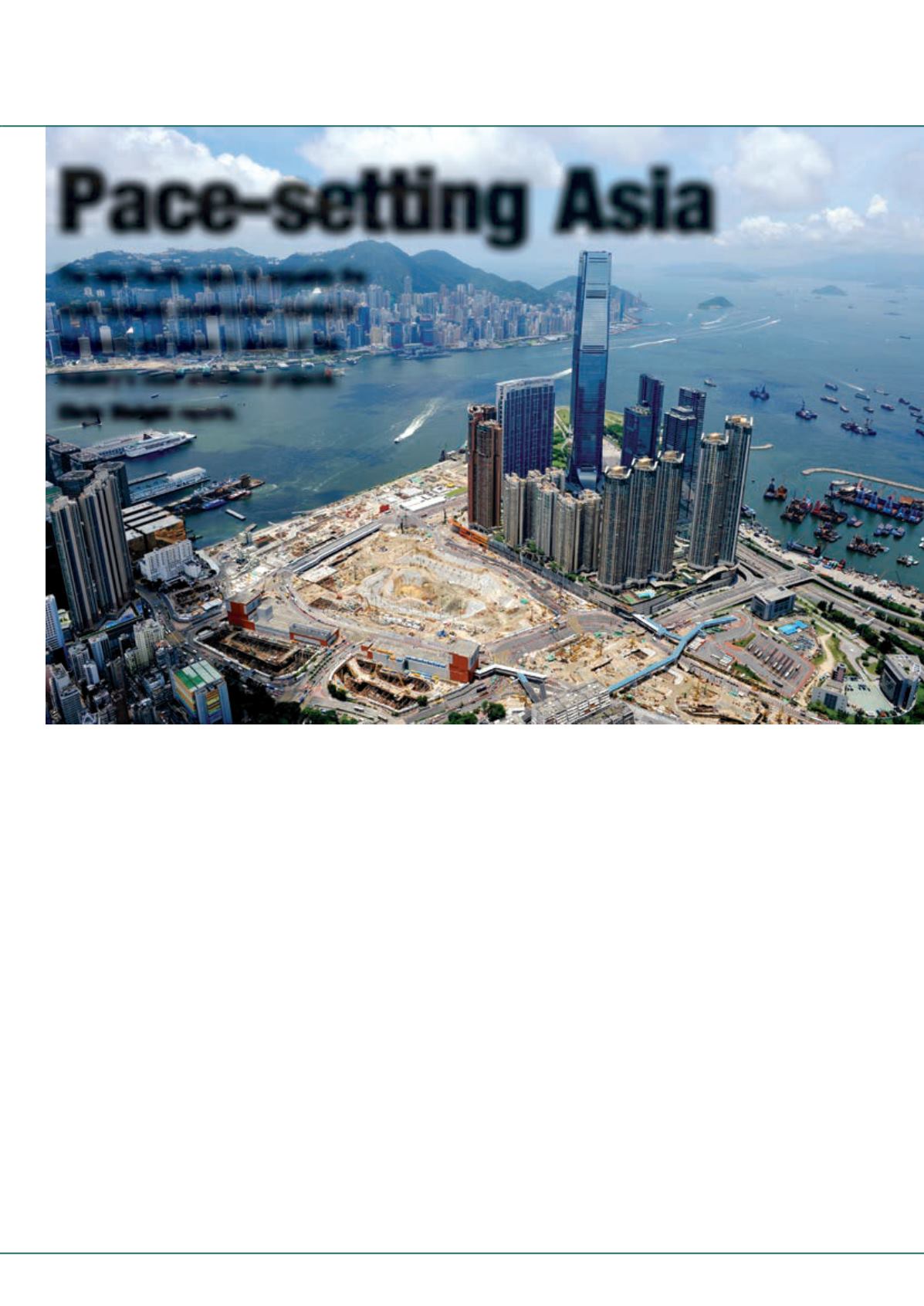
19
june 2014
international
construction
REGIONALREPORT: ASIAPACIFIC
Pace-settingAsia
>
not get off the ground. Last year they included two electricity
generation projects inPakistanworthmore thanUS$ 1 billion,
for example.
However, the ADB says the region is falling short of what
it should be spending to meet development goals. It says the
infrastructure segment alone needs investment of US$ 800
billion per year to 2020 to drive economic growth by providing
access to markets, making cities cleaner and easier to navigate,
and creating jobs.
Michael Barrow, the ADB’s deputy director general in its
private sector operations department said, “The infrastructure
deficit inAsia is so enormous that we can’t expect either private
investors or the public sector to take on the challenge alone.We
need collaboration between private and public placers tomake
things work.”
According to theADB, part of the solution todevelopingmore
public-private partnerships (PPPs) in the region lies in getting
the right laws and regulations in place. However, projects can
still fail if they are not developed in a professional manner, it
said.
Key projects
Infrastructure is a catch-all word that covers roads, railways,
ports, water& sewerage, energy and communications networks,
and even housing by some definitions, so it is difficult to
generalise about it. However, one common theme in Asia
Pacific is the prevalence of tunnelling schemes.These feature in
many difference types of infrastructure projects – particularly
transportation and water – and often provide a solution where
The Asia-Pacific region is arguably the
most dynamic constructionmarket in
theworld and home to some of the
industry’smost ambitious projects.
Chris Sleight
reports.
Pace-setting Asia
T
he Asia Pacific region has long been one of the most
attractive anddynamic constructionmarkets in theworld,
with high growth, large individual economies and no
shortage of ambition when it comes to planning infrastructure
andbuildings.
As Scott Hazelton writes in this month’s Economic Outlook
(see p.15), there are a few bumps in the road this year, with
global investment moving away from emerging regions like
Asia-Pacific, back to theUS as yields there improve. In addition,
there are the perennial issues of the pace of public sector reform
– a common theme for many emerging markets around the
world – and disruption form political events, be they expected,
like the elections in India and Indonesia, or more serious, like
themilitary coup inThailand.
But the outlook for the region is still fairly bright. According
to the International Monetary Fund (IMF) GDP growth
among developing Asian nations will be +6.7% this year, up
from +6.5% last year. This is well above growth rates of other
regions of theworld.Thenearest rival is sub-SaharanAfricawith
its projected +5.4% economic growth this year, and the world
average is put at +3.6%.
One of the key institutions in the region as far as the
construction sector is concerned is the Asian Development
Bank (ADB), which financed more than US$ 21 billion of
construction projects in the last year.
Although this is notmuch in the context of total construction
output, which runs into trillions ofDollars per year across Asia,
the key point about the ADB and other development banks is
that they get involved in the larger projects that otherwisemight
The site of the
West Kowloon
Terminus Station
(North) in Hong
Kong, where
RMDKwikform is
supplying shoring
and formwork
for the complex,
high-tolerance
construction of
the station roof
by a Leighton-
Gammon
joint venture
contractor.


